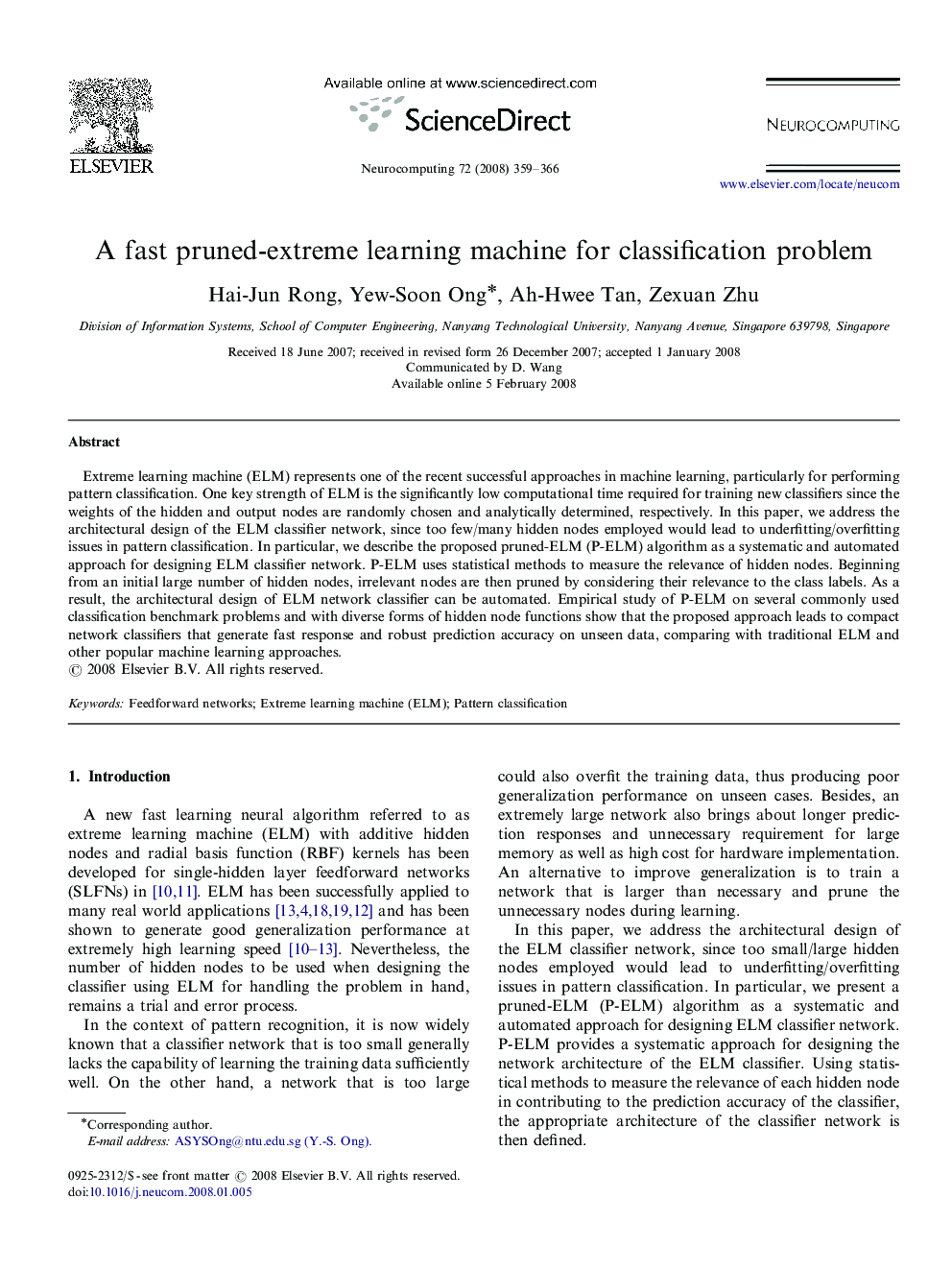| Article ID | Journal | Published Year | Pages | File Type |
|---|---|---|---|---|
| 408903 | Neurocomputing | 2008 | 8 Pages |
Extreme learning machine (ELM) represents one of the recent successful approaches in machine learning, particularly for performing pattern classification. One key strength of ELM is the significantly low computational time required for training new classifiers since the weights of the hidden and output nodes are randomly chosen and analytically determined, respectively. In this paper, we address the architectural design of the ELM classifier network, since too few/many hidden nodes employed would lead to underfitting/overfitting issues in pattern classification. In particular, we describe the proposed pruned-ELM (P-ELM) algorithm as a systematic and automated approach for designing ELM classifier network. P-ELM uses statistical methods to measure the relevance of hidden nodes. Beginning from an initial large number of hidden nodes, irrelevant nodes are then pruned by considering their relevance to the class labels. As a result, the architectural design of ELM network classifier can be automated. Empirical study of P-ELM on several commonly used classification benchmark problems and with diverse forms of hidden node functions show that the proposed approach leads to compact network classifiers that generate fast response and robust prediction accuracy on unseen data, comparing with traditional ELM and other popular machine learning approaches.
